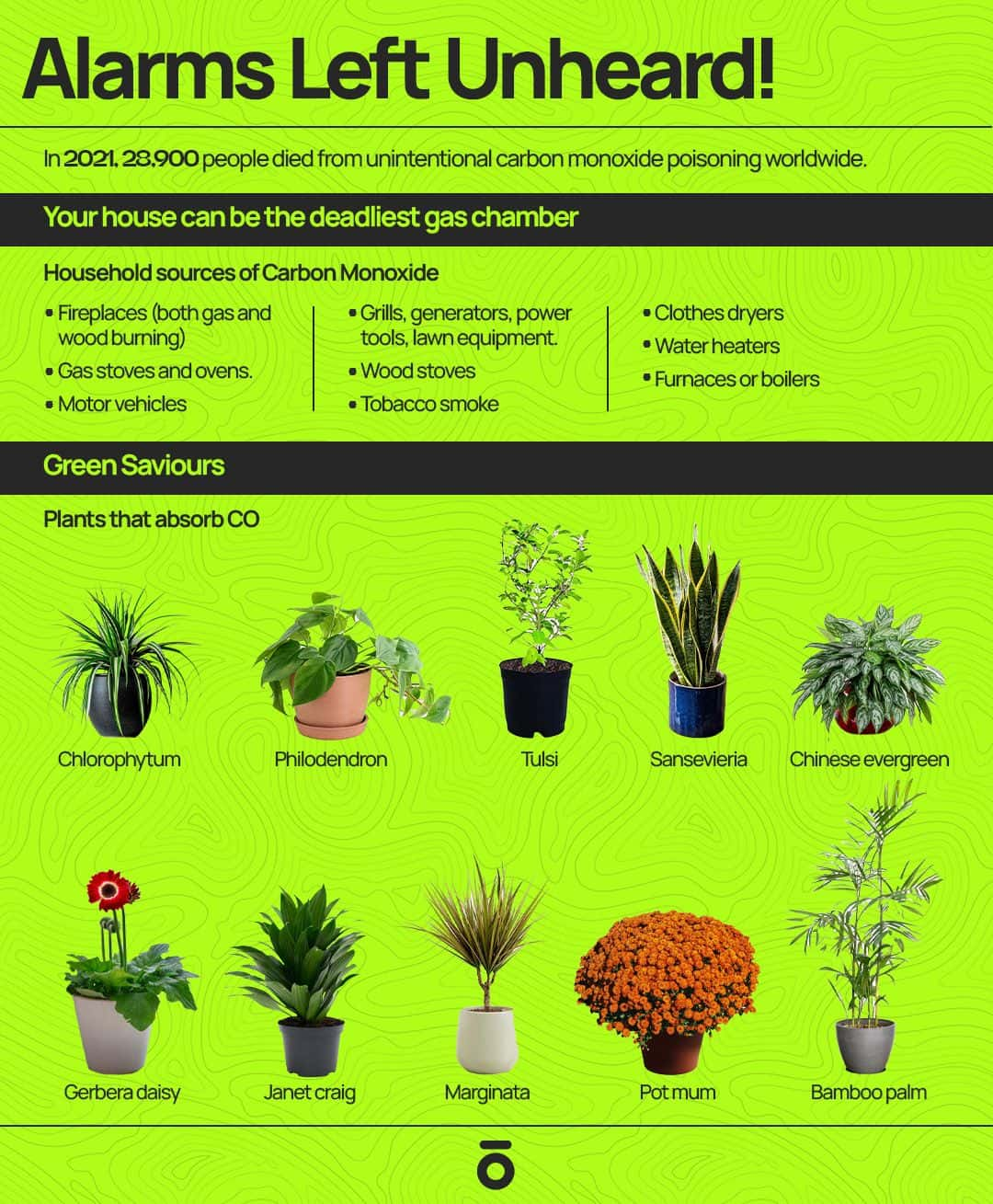Signs and Symptoms of Carbon Monoxide Poisoning

Introduction
It’s a cold winter evening in the Sen household. Sasha and her family are at home in Delhi. To keep temperatures warm, they use a space heater that depends on a small propane tank. In one poorly ventilated room, this family relaxes without realising that the heater has a tiny gas leak.
A few hours of using the heater pass. Sasha begins to feel dizzy and lightheaded. Her husband gets a headache and starts feeling tired. The two children they have complain about nausea. First, they think the symptoms are because of cold weather or exhaustion.
As the evening progressed, their condition got worse. Sasha and her husband feel confused and disoriented. They finally realise the air they’ve been breathing feels musty and strange. They tried opening a window for ventilation, but it was too late. The carbon monoxide levels in the room have reached critical levels.
And just like that, a family of four perished. Was this preventable? Probably. Should Sasha and her husband have realised they were breathing in poison? Probably.
In 2021, 28,900 people died from unintentional carbon monoxide poisoning worldwide.
That’s 28,900 perfectly healthy people and completely preventable deaths.
Carbon monoxide takes no hostages. If you breathe it, there’s very little chance of survival. The only problem with carbon monoxide is that it is a colourless, odourless, and tasteless gas, so it cannot be detected by humans using their senses. Imagine a gas so deadly, you wouldn’t even realise if you were breathing it. By the time you realise it, it will be too late. You would be just another victim of this poisonous gas. So, what are the signs of carbon monoxide poisoning? Here are the seven signs and symptoms of carbon monoxide poisoning.

Tell tale signs of Carbon Monoxide poisoning
Headache
When it comes to carbon monoxide poisoning symptoms, a headache comes first. One study collected information on carbon monoxide-associated headaches taken from 34 female and 66 male patients. The research reported a mean carboxyhemoglobin level of 21.3%(+/- 9.3%). For reference, non-smokers usually have 0% carboxyhemoglobin in their blood. The most common pain location was frontal, with 66%, although more than one location was involved in around 58% of patients.
The pain’s nature at any time during its course was dull in 72% of patients and sharp in around 36% of patients. The headache was a throbbing style in 41%, constant in 74% and intermittent in 16% of those who were evaluated. Headaches are the first and most common symptom of carbon monoxide poisoning.
Dizziness
In terms of signs of carbon monoxide poisoning, dizziness occurs next. This happens because of reduced oxygen levels, affecting balance and coordination. You feel a little dizzy, and before you know it, the room is swimming in front of your eyes. Reduced oxygen levels affect balance and coordination, making you feel dizzy.
By this time, you should get help if you have been exposed to carbon monoxide poisoning. If you don’t get help, from here onwards, it’s a rapid slide to death. Carbon monoxide headache and dizziness mean you could still be saved.
Confusion
Confusion comes next, one of the early symptoms of carbon monoxide. Carbon monoxide messes with the ability of the brain to receive oxygen. When inhaled, carbon monoxide binds to haemoglobin more readily than oxygen, which results in carboxyhaemoglobin, bringing down the oxygen available to vital organs like the brain. This lack of oxygen causes cognitive dysfunction, which might cause confusion, problems in concentrating, memory or disorientation.
Nausea and Vomiting
Nausea from carbon monoxide poisoning. When carbon monoxide enters your bloodstream, it brings down the amount of oxygen that vital organs like the stomach receive. This leads to gastrointestinal issues, resulting in nausea and vomiting and even sometimes abdominal pain. You feel nauseous because the gas enters your blood and messes with its composition.
Rapid Heartbeat
Carbon monoxide poisoning has a massive impact on your heartbeat. Our heartbeat is a coordinated electrical impulse that spreads throughout the heart. However, carbon monoxide poisoning usually disrupts this electrical wave, leading to heart rhythm abnormalities. This makes your heart beat faster than normal because it knows something is coming.
Shortness of breath
Carbon monoxide lowers the oxygen levels in the blood, causing the vital organs to receive less oxygen. This primarily causes shortness of breath, which the body feels because it tries to overcompensate for the lack of oxygen. During the early stages of carbon monoxide poisoning, shortness of breath may accompany physical activity, but as exposure increases, it happens even during resting periods.
Seizures
As the oxygen levels in the blood reduce, seizures occur - this happens because carbon monoxide binds to the haemoglobin in the blood, and the vital organs receive less oxygen as a result. From here on, if you don’t receive help, then you’re staring at death in the face.

Conclusion
In conclusion, carbon monoxide poisoning is not very common, but don’t let that make you complacent. This is a deadly gas, and inhaling it can have terrible consequences for you or your loved ones. Some of the most common sources of carbon monoxide as a gas are clothes dryers, water heaters, furnaces, boilers, fireplaces (both gas and wood burning), gas stoves and ovens, motor vehicles, grills, generators, lawn equipment, power tools, wood stoves and cigarette smoke. Next time you mistakenly inhale carbon monoxide, step away from the source and get yourself checked by your healthcare provider just in case.





